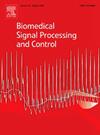Spectral feature extraction using the UFIR iterative smoother algorithm for ECG signal classification
IF 4.9
2区 医学
Q1 ENGINEERING, BIOMEDICAL
引用次数: 0
Abstract
Heart diseases are the leading cause of death worldwide. One effective non-invasive method for diagnosing heart-related conditions is the analysis of Electrocardiogram (ECG) recordings. These recordings capture the shape of the primary ECG waves, facilitating the automated detection of various pathologies. However, the accuracy of these measurements can be affected by noise or artifacts that occur during the ECG acquisition process. Although many techniques have been proposed to address this issue, there remains a need to improve the precision of automatic ECG signal detection and classification. Our study aimed to reduce noise and extract features from ECG signals associated with arrhythmia, congestive heart failure, and normal sinus rhythm. We evaluated the performance of the Unbiased Finite Impulse Response (UFIR) smoother by comparing it with other techniques, using the root Mean Square Error (RMSE) under various noise levels. Our findings highlighted the significant advantages of the UFIR technique. In addition, we conducted tests using Analysis of Variance (ANOVA) and Kruskal–Wallis analysis to explore the time–frequency domain features obtained from the Short-Time Fourier Transform (STFT) of the states produced by the UFIR smoother. These enhancements improved the performance of the classification model. The results indicated that machine learning techniques based on optimized neural networks achieved impressive metrics, including an F1-score of 0.96, a precision of 95.65%, an accuracy of 93.39%, and Cohen’s kappa of 0.90. Notably, the states of ECG signals provided by the UFIR smoother offer features that could significantly enhance the diagnosis of these pathologies.
光谱特征提取利用UFIR迭代平滑算法进行心电信号分类
心脏病是世界范围内导致死亡的主要原因。一种有效的无创诊断心脏相关疾病的方法是分析心电图(ECG)记录。这些记录捕获初级心电波的形状,促进各种病理的自动检测。然而,这些测量的准确性可能会受到在ECG采集过程中出现的噪声或伪影的影响。虽然已经提出了许多技术来解决这个问题,但仍然需要提高心电信号自动检测和分类的精度。我们的研究旨在降低与心律失常、充血性心力衰竭和正常窦性心律相关的ECG信号的噪声并提取其特征。我们通过使用不同噪声水平下的均方根误差(RMSE),将无偏有限脉冲响应(UFIR)平滑器与其他技术进行比较,从而评估其性能。我们的发现突出了UFIR技术的显著优势。此外,我们使用方差分析(ANOVA)和Kruskal-Wallis分析进行了测试,以探索由UFIR平滑产生的状态的短时傅里叶变换(STFT)获得的时频域特征。这些增强提高了分类模型的性能。结果表明,基于优化神经网络的机器学习技术取得了令人印象深刻的指标,其中f1得分为0.96,精密度为95.65%,准确度为93.39%,科恩kappa为0.90。值得注意的是,由UFIR平滑器提供的心电信号状态提供的特征可以显著增强这些病理的诊断。
本文章由计算机程序翻译,如有差异,请以英文原文为准。
求助全文
约1分钟内获得全文
求助全文
来源期刊

Biomedical Signal Processing and Control
工程技术-工程:生物医学
CiteScore
9.80
自引率
13.70%
发文量
822
审稿时长
4 months
期刊介绍:
Biomedical Signal Processing and Control aims to provide a cross-disciplinary international forum for the interchange of information on research in the measurement and analysis of signals and images in clinical medicine and the biological sciences. Emphasis is placed on contributions dealing with the practical, applications-led research on the use of methods and devices in clinical diagnosis, patient monitoring and management.
Biomedical Signal Processing and Control reflects the main areas in which these methods are being used and developed at the interface of both engineering and clinical science. The scope of the journal is defined to include relevant review papers, technical notes, short communications and letters. Tutorial papers and special issues will also be published.
 求助内容:
求助内容: 应助结果提醒方式:
应助结果提醒方式:


